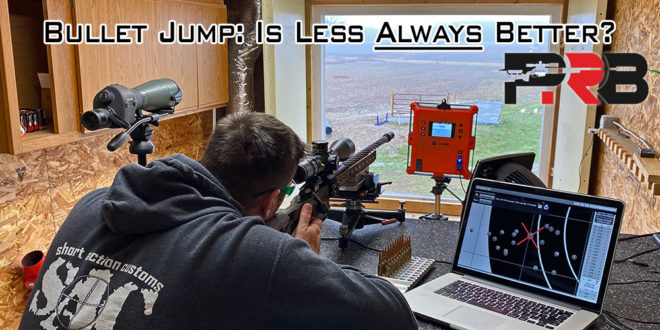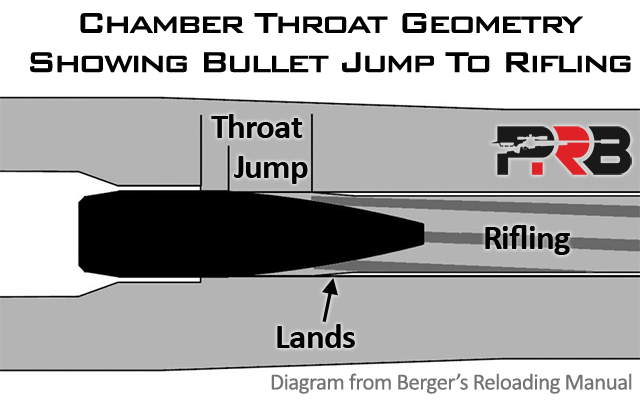They are essentially the same thing no? If you seat the bullet deeper then you are in turn increasing the jump. Or am I understanding this wrong.
No, it's not the same thing. Certainly, when you change your jump measurement, your seating depth changes the same amount. But your jump is constantly changing as your throat erodes, while your seating depth remains the same (unless you chase the lands at some point).
When you change your seating depth for a particular load, that directly changes volume of the interior of the case for the powder and the pressure curve of the load as well and the time it takes for the bullet to clear your muzzle. Keeping that pressure curve and the bullet dwell time through the barrel the same is important for keeping your load as accurate as you've developed. When you're .010 or more off the lands, the pressure curve is almost not effected at all whether you're .020 or .100 off the lands. Only when you're into the lands will you get significant change in the pressure curve. The goal is to keep that pressure curve constant as possible as well as the time it takes the bullet to exit the muzzle to keep in the harmonic node for your consistent accuracy. These two factors are way, way more important than the distance of the jump.
In these threads, people most often mention how much jump they are using. But someone's jump really has no meaning since everyone's chamber is a difference configuration and size. When I say my jump is .117", that cartridge in someone else gun might be .030" of jump or .150" of jump depending on the amount of freebore their particular gun's chamber has. It's better to know the COAL, where one can then calculate how much jump (or better yet, the seating depth) that represents in a particular chamber.
Or are you saying use the OAL as a starting point then just worry about what seating depth on my die is from then on, not comparing it to the "jump". (Even though it's technically the same thing)
Not trying to be argumentative, just trying to make sure I understand everything correctly. I don't have anyone to really teach me so I've learned by watching a bunch of videos.
Once you've located where you lands is, you decide on a starting point somewhere off the lands, .010, .020, .030" off . . . whatever. From there you focus on the powder charge that works best, then the seating depth to fine tune your load (ignoring jump all the while as it's constantly changing over time anyway). CAOL is only an issue when you're trying to fit a cartridge into your mag. So, one might try to get the maximum COAL that'll fit into their mag, as a starting point (still ignoring jump, unless the jump then happens to be into the lands or is just too close to it).
When you find a "seating depth" that is working well, you can keep your seating die set there, unless there's a significant change in bullet dimensions, and do just fine even though the jump changes over time.
One other thing I do to keep my seating depth very consistent, it sort my bullets from the base to the contact point of my seating stem. It's like measuring the bullets BTO, only using a different comparator (for my 6.5 a 17 caliber Sinclair comparator is very close to the right diameter) that touches the ogive at a much higher place. That makes for very consistent seating depth. In addition, because there can significant differences from lot of lot of bullets, I'll adjust my seating die so that the actual seating depth (the distance from the base of the bullet to the rim of the case mouth) is the same. I want the base of the bullet to be in the same distance so there's no change in the cases volume do the variance in bullet dimensions. I continue to ignore bullet jump, and only make changes in seating depth when I see significant changes in accuracy.



